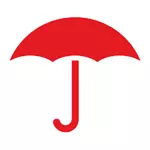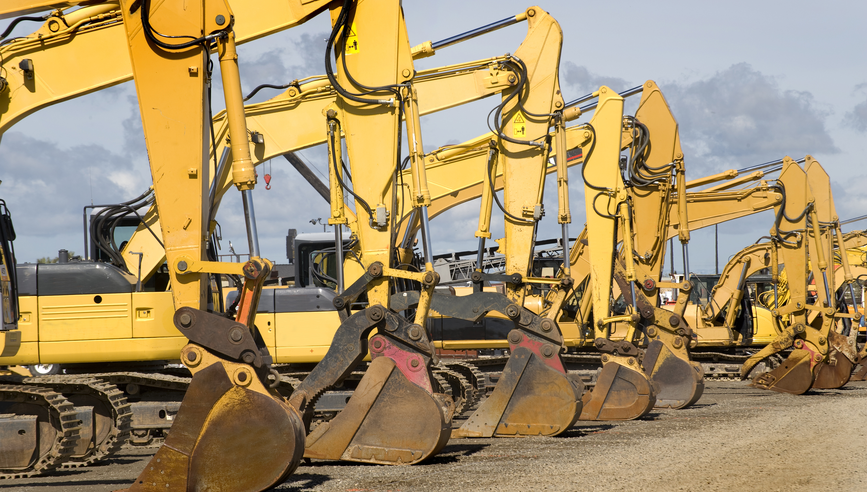7 Threats to Mobile Equipment Dealers and Smart Ways to Help Avoid Losses


From excavators and cranes to tractors and skidders, expensive machinery integrated into complex plans and operations may create a unique combination of risks for mobile equipment dealers. Whether they focus on renting, selling or servicing heavy equipment – or offer specialized services such as transportation and delivery – these businesses require careful risk management. This is especially true for construction equipment rental companies due to the significant value of their inventory and their essential role in supporting large, time-sensitive construction projects. The more business managers understand the hazards to their operations – and how best to manage them – the better equipped their business will be to prevent large losses.
1. Theft and fraud
Annually, over 11,000 incidents of construction equipment theft are reported in the U.S., with losses ranging from $300 million to $1 billion.1 Equipment is most frequently stolen from worksites, but thefts from dealer lots and during transit are also common.2 Fictitious pickups, unverified drop-offs and failure to return rented equipment are other forms of theft.
Common targets include high-value machinery that is easy to move such as small trailers, skid steers and backhoes, as well as transportable equipment such as generators and tools. Deterrence is the key to protecting your investments:
- Keep equipment in well-lit, fenced-in areas monitored with cameras.
- Install a network of security cameras, alarm systems and motion sensors throughout the dealership.
- Use immobilization devices such as wheel locks, steering wheel locks and ignition intervention systems on the equipment itself.
- Disable equipment using hydraulic cylinder locks or lockouts, or by removing battery cables.
In the event that theft prevention efforts fail, GPS tracking devices can help with recovery. Consider registering equipment with the National Equipment Register, a valuable resource that helps law enforcement agencies identify, locate and recover stolen equipment.
Because mobile equipment rental and sales transactions often involve significant financial sums, the equipment is also an attractive target for fraudulent activities. Individuals with malicious intent may exploit vulnerabilities in the vetting process, making it essential for businesses to take proactive measures to mitigate risk.
- Thoroughly vet potential customers before completing sales or rentals. This can include identity verification, financial assessment to ensure they have the capacity to fulfill obligations and reference checks.
- Consider adding false pretense coverage to your business insurance policy.
2. Property damage to equipment in transit
Mobile equipment presents a heightened risk of property damage due to its mobility. During transport, it’s vulnerable to collisions, rollovers and damage to other vehicles and infrastructure. Locations where equipment is operated may present challenging conditions, increasing the likelihood of accidents, collisions and damage to surroundings. In storage, equipment is susceptible to moisture, chemicals and other environmental factors that can lead to corrosion and deterioration of equipment parts.
These actions can help reduce the risk of property damage:
- Inspect and prepare equipment thoroughly for transport.
- Employ experienced drivers who understand the challenges of hauling heavy equipment.
- Plan routes carefully to avoid congested areas and exposure to potential hazards.
- Implement environmental measures to control humidity and temperature in storage areas.
- Review Motor Vehicle Records (MVRs) regularly to help ensure that drivers have a clean driving history, helping to reduce the risk of accidents.
- Provide defensive driver training to equip drivers with skills to anticipate and respond to road hazards.
- Conduct load securement training to help ensure that equipment is securely fastened during transport.
3. Adverse weather
Adverse weather can upend a mobile equipment dealership without warning. Hailstorms can leave dents and dings on the surface of equipment, crack canopies and shatter windshields. Wildfires, floods and other weather events can cause widespread damage to inventory, buildings and operations. Tornados alone can inflict severe losses to a single location with equipment in the open. With extreme weather on the rise3, it is crucial for business leaders to understand the potential impact and take preventive measures. These steps can help reduce a business’s risk to weather-related losses:
- Protect buildings with storm-resistant roofing, impact-resistant windows, drainage systems and backup power.
- Store high-value or vulnerable equipment indoors or in secure, weather-resistant storage.
- Relocate inventory in flood-prone areas or protect in place with floodwalls and shields.
- Create a weather emergency response plan and train employees on how to implement it.
4. Contractual pitfalls
Contracts are central to business operations and critical to get right. A well-drafted agreement sets expectations and minimizes confusion by clearly documenting each party’s responsibilities under the agreement – in this case, the equipment dealer’s and the customer’s. An unclear or incomplete contract can cause misunderstandings about each party’s rights, responsibilities and obligations, potentially leading to costly legal disputes.
Standardized contract templates can help protect both parties involved. When customized to a business’s specific needs, these templates can efficiently address essential details such as equipment condition, usage guidelines, payment terms and delivery logistics.
Risk transfer helps shift the financial burden of certain risks away from the business and is an important way to manage risks through contract terms. Consider including the following mechanisms to transfer risk effectively:
- Indemnification clauses to address third-party claims arising from the use of equipment.
- Waivers that release the business from specific liabilities, such as accidents, injuries or damages associated with equipment usage.
- Warranty provisions covering equipment repairs or replacement parts.
- Maintenance and service agreements.
- Provisions for cancellation, termination and breach of contract.
- Insurance requirements.
In addition to obtaining a signed contract, businesses require evidence of insurance from all customers and maintain detailed records of all transactions and communications. Legal counsel should also review all contracts periodically to ensure they meet industry and regulatory standards as well as the needs of the business.
When hiring a third-party trucking company, a subhauler agreement is essential. This agreement should outline responsibilities for handling and transporting the equipment, liability for damages and insurance requirements. Dealers should also verify that the motor truck cargo (MTC) insurance carried by the hauler has limits adequate to cover the full value of the equipment being transported.
Similarly, if the renter hauls the equipment themselves, the dealer should confirm that their transportation insurance provides adequate coverage for potential losses. This precaution helps protect the business from financial risk in case of damage during transit.
5. Incomplete documentation and inaccurate inventory
Meticulous records of incoming equipment and parts, such as purchase orders, bills of lading and vendor invoices, help assure accurate inventory tracking, cost control and quality assurance. Similarly, accurate outbound documents like sales invoices, lease agreements, receipts and warranty information are essential for order fulfillment, equipment usage and maintenance, revenue tracking and customer satisfaction. Missing documents, errors and omissions can have serious repercussions, including incorrect or incomplete orders, inventory discrepancies, operational inefficiencies, dissatisfied customers and potential legal challenges.
Incorrect stock levels can result in overstocking or understocking, impacting cash flow and potentially inflating equipment value on financial records due to depreciation. Additionally, maintaining obsolete equipment ties up capital and increases costs, eroding profit margins and hindering business growth. Accurate records are crucial for insurance assessments, particularly when dealing with a mix of new and used equipment.
To help mitigate these risks:
- Use consistent formats and templates for all inbound and outbound documents and have them reviewed periodically by legal counsel.
- Implement a digital record management system to capture all documentation and assist with managing inventory, shipments, orders and billing.
- Capture detailed photos and videos of equipment to document its condition upon arrival before transport and once it has been returned. This enables greater accuracy of condition assessments for things like damage claims, repairs documentation, etc., and can help prevent disputes.
- Use appropriate depreciation methods and ensure accurate valuation of inventory.
6. Fire, smoke and water damage
A significant portion of vehicle fires at industrial properties (55%) involve off-road or heavy equipment vehicles and account for 72% of the resulting property damage. Such fires are mainly caused by mechanical failures or malfunctions, followed by electrical and mechanical failures and factors such as leaks, breaks and heat sources that are too close to combustible materials.4
Vehicle fires represent a significant threat, but they are not the only concern. The dealership’s building and grounds also harbor potential fire hazards. The presence of fuel, hot work activities and combustible materials within the dealership environment creates an ongoing and significant risk of fire and resultant smoke and water damage.
To help mitigate these risks:
- Schedule inspections and preventive equipment maintenance to identify and address potential fire hazards, such as fuel leaks and electrical problems, before they become major problems.
- Install fire alarms, extinguishers and sprinkler systems throughout the dealership.
- Store fuel and flammable materials in well-ventilated areas away from ignition sources.
- Establish a hot work program to control and supervise welding, cutting and grinding operations.
7. Insufficient equipment maintenance
A preventive maintenance program is critical for mobile equipment dealers, especially given the equipment’s frequent usage by multiple parties. Constant use leads to significant wear and tear, making maintenance necessary to ensure optimal performance and longevity.
To establish an effective equipment maintenance program, consider taking the following steps:
- Define maintenance intervals for each piece of equipment based on manufacturer recommendations and the level of usage.
- Maintain detailed maintenance logs and service histories.
- Conduct thorough pre- and post-delivery checks.
Protecting mobile equipment dealerships
Prioritizing risk management is not just a best practice, it’s crucial to sustaining a mobile equipment dealership. Travelers offers cost-effective risk management services that equipment dealers can tailor to their needs. These include access to industry-leading construction specialists, online resources like the Transportation Innovation Network and a curated collection of safety solutions for workers, worksites and businesses. Travelers Mobile Equipment Dealers Insurance provides critical coverage, and the Travelers Special Investigations Group helps recover stolen equipment.
Talk to your insurance professional about Travelers expertise in mobile equipment business risks or find an agent.
Sources
1,2 https://www.ner.net/wp-content/uploads/2017/10/Annual-Theft-Report-2016.pdf
3 https://www.noaa.gov/news/us-struck-with-historic-number-of-billion-dollar-disasters-in-2023
4 https://www.nfpa.org/education-and-research/research/nfpa-research/fire-statistical-reports/fires-in-us-industrial-or-manufacturing-properties




